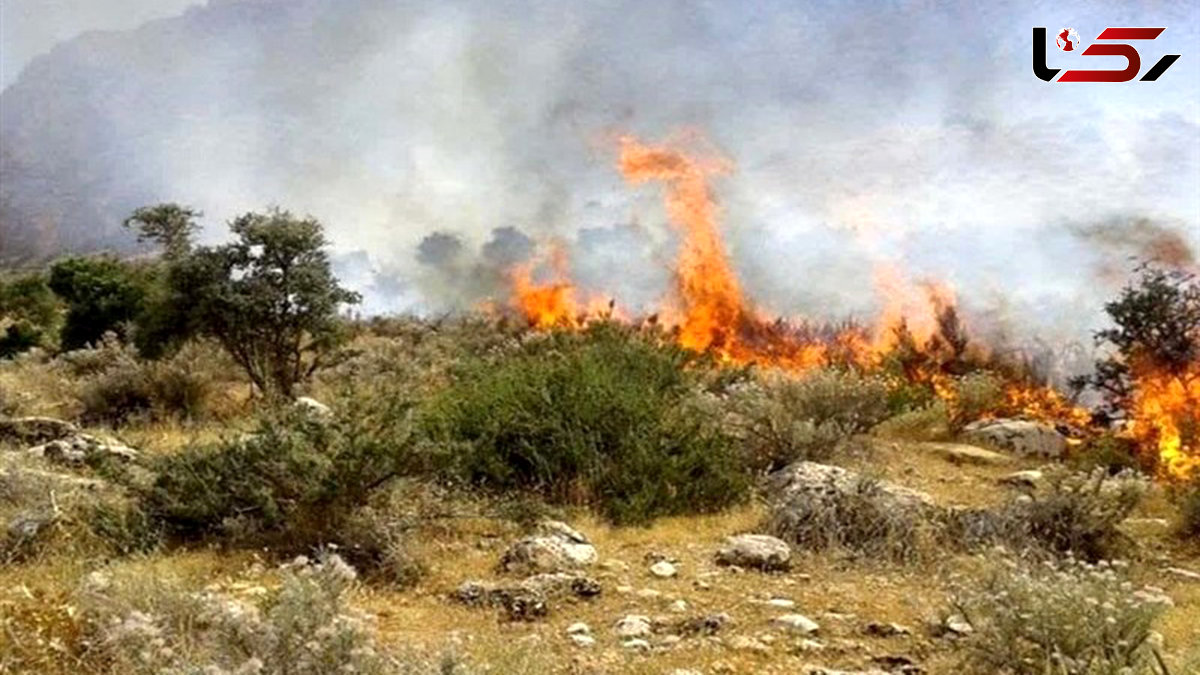Rokna Reports:
Forest Fires Spread as Environmental Cultural Unit and Media Stay Absent
As unprecedented heat scorches Iran’s fragile, drying nature to the brink of collapse, a single careless act is enough to ignite hundreds of hectares of forest. Yet, the disaster becomes complete when neither the national media issues warnings, nor municipalities promote public awareness, and the Environmental Protection Organization seems to play no active role. Meanwhile, fires rage on, and nature, defenseless as never before, is silently burning.

According to Rokna’s social affairs correspondent, with temperatures reaching extraordinary highs and the earth gasping under the heat, forests and pastures have become dry tinder, prone to ignition. However, what transforms these fires from potential threats to full-blown catastrophes is not only the extreme heat and drying of natural resources but also the negligence of some citizens and the ineffectiveness of responsible organizations.
Last week, widespread fires were reported across the country, including northern forests, the pastures of Ilam and Kermanshah, and even the heights of Alborz. Most of these fires were caused by careless behaviors such as discarding cigarette butts, leaving partially burned charcoal unattended, lighting fires for cooking in forested areas, or irresponsible recreational activities. These causes are easily preventable but, due to negligence, centuries-old forests can be reduced to ashes within hours.
However, the problem extends beyond public behavior. What escalates these disasters into uncontrollable crises is a serious lack of firefighting equipment and insufficient operational readiness within responsible organizations. Many mountainous or hard-to-reach areas still lack access to firefighting helicopters or mobile water tankers. Volunteers, exhausted rangers, and citizens fighting fires with bare hands paint a painful picture of nature’s vulnerability in the face of crisis.
The absence of a crucial player is felt most acutely: the media. According to law, the national broadcaster should play a role in public education and environmental culture promotion. Yet in practice, it remains silent or covers the issue with lifeless, superficial reports. It could and should air specialized programs daily and weekly, documentaries on resource destruction, reports on wildfires, and expert interviews. Without this programming, the public remains unaware of environmental importance and preventive measures.
Municipalities, as key stakeholders in urban green space management, can and must use their cultural and advertising tools—such as city billboards, street exhibitions, educational workshops at cultural centers, and neighborhood campaigns—to embed a culture of nature protection from the streets to cyberspace.
Organizing “Forest Protection Weeks,” environmental and artistic competitions for children and teenagers, training local guards, and establishing networks of volunteer fire responders can save forests’ lives far more effectively than funds spent on showy projects.
Finally, the Environmental Protection Organization—especially its cultural and educational division—is nearly invisible in this crisis. If this division limits itself to printing a few brochures and lacks a continuous, impactful strategy for public education, one must question its true role. Why, instead of an active presence in media, schools, universities, and public institutions, does it only appear in official reports and memos?
Forests are not merely collections of trees; they are living ecosystems, reservoirs of water, natural oxygen producers, wildlife shelters, and climate stabilizers. Every wildfire is not just the loss of a few hectares of vegetation, but the irreversible destruction of an ecosystem.
If we excuse ourselves from action by citing global warming, climate change, and drought, how can we justify human negligence? And if officials continue ignoring the need to equip and train firefighting teams, what will remain of these natural resources for future generations?
Before the forests once again rise in smoke and we respond merely with condolences and regrets, it is time for the national media, municipalities, Ministry of Education, Environmental Protection Organization, and every one of us to recognize our true responsibilities. In the face of nature, no one is a bystander — we are either part of the solution or part of the disaster.
Send Comments